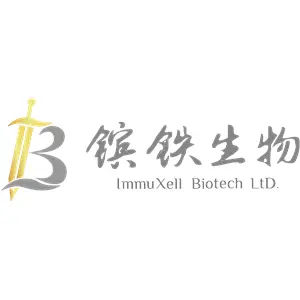预约演示
更新于:2025-11-15
ALOX15 inhibitor (Guangdong Medical University)
更新于:2025-11-15
概要
基本信息
关联
100 项与 ALOX15 inhibitor (Guangdong Medical University) 相关的临床结果
登录后查看更多信息
100 项与 ALOX15 inhibitor (Guangdong Medical University) 相关的转化医学
登录后查看更多信息
100 项与 ALOX15 inhibitor (Guangdong Medical University) 相关的专利(医药)
登录后查看更多信息
7
项与 ALOX15 inhibitor (Guangdong Medical University) 相关的文献(医药)2024-12-31·Journal of enzyme inhibition and medicinal chemistry
Development of novel ALOX15 inhibitors combining dual machine learning filtering and fragment substitution optimisation approaches, molecular docking and dynamic simulation methods
Article
作者: Cao, Peng ; Luo, Lianxiang ; Liao, Yinglin
The oxidation of unsaturated lipids, facilitated by the enzyme Arachidonic acid 15-lipoxygenase (ALOX15), is an essential element in the development of ferroptosis. This study combined a dual-score exclusion strategy with high-throughput virtual screening, naive Bayesian and recursive partitioning machine learning models, the already established ALOX15 inhibitor i472, and a docking-based fragment substitution optimisation approach to identify potential ALOX15 inhibitors, ultimately leading to the discovery of three FDA-approved drugs that demonstrate optimal inhibitory potential against ALOX15. Through fragment substitution-based optimisation, seven new inhibitor structures have been developed. To evaluate their practicality, ADMET predictions and molecular dynamics simulations were performed. In conclusion, the compounds found in this study provide a novel approach to combat conditions related to ferroptosis-related injury by inhibiting ALOX15.
2024-12-01·INTERNATIONAL IMMUNOPHARMACOLOGY
Chicoric acid acts as an ALOX15 inhibitor to prevent ferroptosis in asthma
Article
作者: Lai, Tianli ; Luo, Lianxiang ; Deng, Liyan ; Liu, Kangdi ; Li, Xiaoling ; Wang, Wenjian
BACKGROUND:
Chicoric acid (CA) is a crucial immunologically active compound found in chicory and echinacea, possessing a range of biological activities. Ferroptosis, a type of iron-dependent cell death induced by lipid peroxidation, plays a key role in the development and advancement of asthma. Targeting ferroptosis could be a potential therapeutic strategy for treating asthma.
PURPOSE:
The purpose of this study was to explore the screening of ALOX15, a pivotal target of ferroptosis in asthma, and potential therapeutic agents, as well as to investigate the promising potential of CA as an ALOX15 inhibitor for modulating ferroptosis in asthma.
METHODS:
Through high-throughput data processing of bronchial epithelial RNA from asthma patients using bioinformatics and machine learning, the key target of ferroptosis in asthma, ALOX15, was identified. An inhibitor of ALOX15 was then obtained through high-throughput molecular docking and molecular dynamics simulation tests. In vitro experiments were conducted using a 16HBE cell model induced by house dust mite (HDM) and lipopolysaccharide (LPS), which were treated with the ALOX15 inhibitor (PD146176), CA treatment, or ALOX15 knockdown. In vivo experiments were also carried out using a mouse model induced by HDM and LPS.
RESULTS:
The composite model of ALOX15 and CA in molecular dynamics simulations shows good stability and flexibility. Network pharmacological analysis reveals that CA regulates ferroptosis through ALOX15 in treating asthma. In vitro studies show that ALOX15 is highly expressed in HDM and LPS treatments, while CA inhibits HDM and LPS-induced ferroptosis in 16HBE cells by reducing ALOX15 expression. Knockdown of ALOX15 has the opposite effect. Metabolomics analysis identifies key compounds associated with ferroptosis, including L-Targinine, eicosapentaenoic acid, 16-hydroxy hexadecanoic acid, and succinic acid. In vivo experiments demonstrate that CA suppresses ALOX15 expression, inhibits ferroptosis, and improves asthma symptoms in mice.
CONCLUSION:
Our research initially identified CA as a promising asthma treatment that effectively blocks ferroptosis by specifically targeting ALOX15. This study not only highlights CA as a potential therapeutic agent for asthma but also introduces novel targets and treatment options for this condition, along with innovative approaches for utilizing natural compounds to target diseases associated with ferroptosis.
2023-01-01·PeerJ
A review on the relationship between Arachidonic acid 15-Lipoxygenase (ALOX15) and diabetes mellitus.
Review
作者: Zhao, Jing ; Wang, Jianqin ; Du, Hongxuan ; Zhou, Xiaochun ; He, Kaiying ; Deng, Rongrong
Arachidonic acid 15-lipoxygenase (ALOX15), as one of the lipoxygenase family, is mainly responsible for catalyzing the oxidation of various fatty acids to produce a variety of lipid components, contributing to the pathophysiological processes of various immune and inflammatory diseases. Studies have shown that ALOX15 and its related products are widely distributed in human tissues and related to multiple diseases such as liver, cardiovascular, cerebrovascular diseases, diabetes mellitus and other diseases. Diabetes mellitus (DM), the disease studied in this article, is a metabolic disease characterized by a chronic increase in blood glucose levels, which is significantly related to inflammation, oxidative stress, ferroptosis and other mechanisms, and it has a high incidence in the population, accompanied by a variety of complications. Figuring out how ALOX15 is involved in DM is critical to understanding its role in diseases. Therefore, ALOX15 inhibitors or combination therapy containing inhibitors may deliver a novel research direction for the treatment of DM and its complications. This article aims to review the biological effect and the possible function of ALOX15 in the pathogenesis of DM.
100 项与 ALOX15 inhibitor (Guangdong Medical University) 相关的药物交易
登录后查看更多信息
研发状态
10 条进展最快的记录, 后查看更多信息
登录
| 适应症 | 最高研发状态 | 国家/地区 | 公司 | 日期 |
|---|---|---|---|---|
| 胰腺导管腺癌 | 临床前 | - | 2022-11-27 |
登录后查看更多信息
临床结果
临床结果
适应症
分期
评价
查看全部结果
| 研究 | 分期 | 人群特征 | 评价人数 | 分组 | 结果 | 评价 | 发布日期 |
|---|
No Data | |||||||
登录后查看更多信息
转化医学
使用我们的转化医学数据加速您的研究。
登录
或

药物交易
使用我们的药物交易数据加速您的研究。
登录
或

核心专利
使用我们的核心专利数据促进您的研究。
登录
或

临床分析
紧跟全球注册中心的最新临床试验。
登录
或

批准
利用最新的监管批准信息加速您的研究。
登录
或

特殊审评
只需点击几下即可了解关键药物信息。
登录
或

生物医药百科问答
全新生物医药AI Agent 覆盖科研全链路,让突破性发现快人一步
立即开始免费试用!
智慧芽新药情报库是智慧芽专为生命科学人士构建的基于AI的创新药情报平台,助您全方位提升您的研发与决策效率。
立即开始数据试用!
智慧芽新药库数据也通过智慧芽数据服务平台,以API或者数据包形式对外开放,助您更加充分利用智慧芽新药情报信息。
生物序列数据库
生物药研发创新
免费使用
化学结构数据库
小分子化药研发创新
免费使用

